今日上海
“光,相机”展示:中国动画在五六十年代的突破 - 2024年01月17日
'Lights, Camera' presents: Chinese animation's breakthrough in 1950s and 1960s

Chinese animator Wan Laiming created the country's first animated color feature film "The Monkey King: Uproar in Heaven."
Chinese animation began to win over audiences with its qualities and artistic appeal in the mid-1950s.
This new installment of our cultural column "Lights, Camera" will focus on iconic creations from 1957 to 1965, a period when Chinese animation enjoyed considerable growth.
The Shanghai Animation Film Studio was founded on April 1, 1957, at the Shanghai Film Studio.
After the establishment of the People's Republic of China, it was the first professional studio to create and produce animated films.
To some extent, the growth of the animation studio mirrored the advancements in Chinese animation during that period.
Veteran animators and traditional theater artists were asked to teach at the studio's training courses, which helped in the development of batches of young animators with originality and artistic ability.
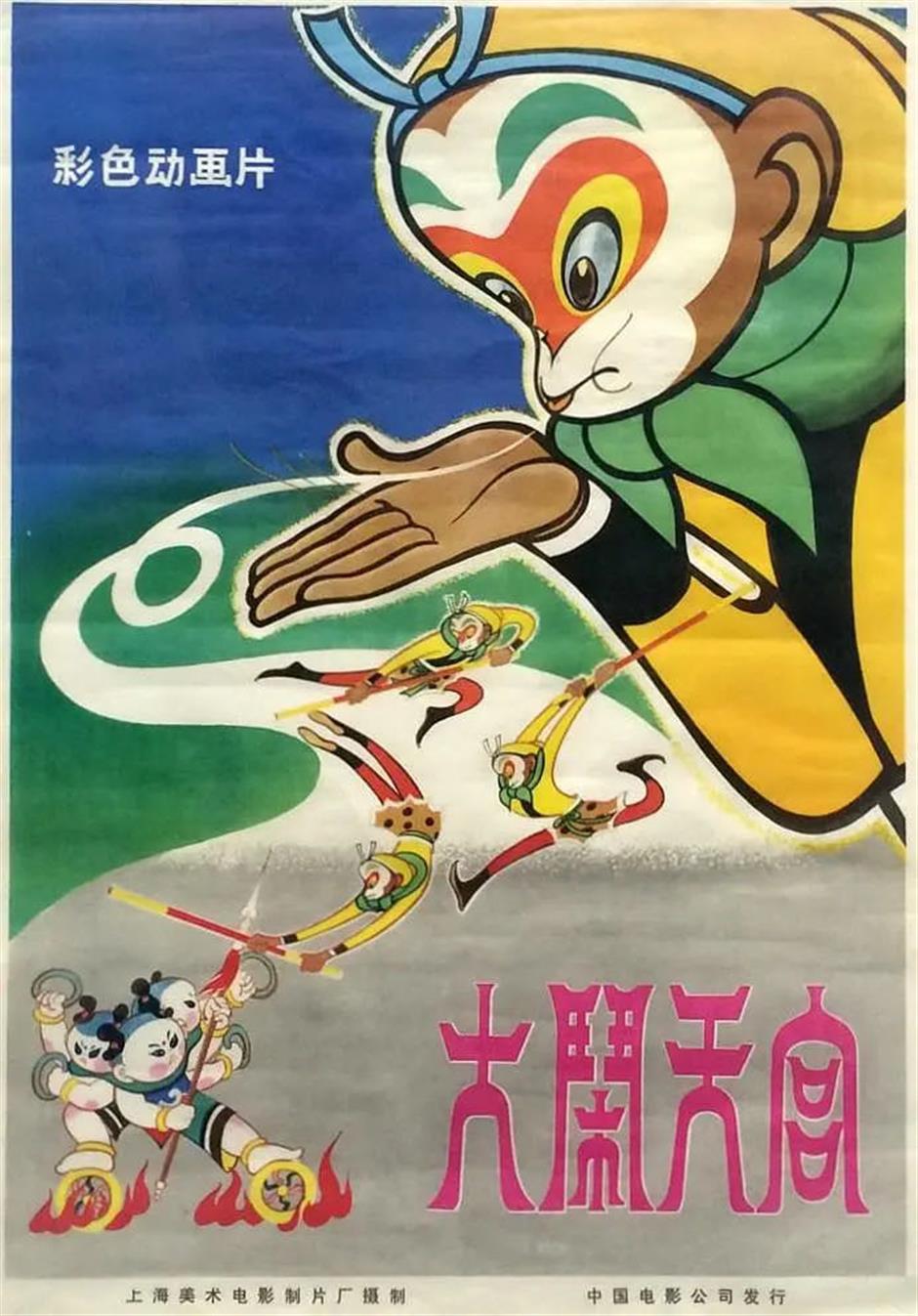
"The Monkey King: Uproar in Heaven" was a watershed moment in Chinese animation.

The animated film, which was made into two episodes, includes about 850 shots that required over 154,000 sketches in 120 colors.
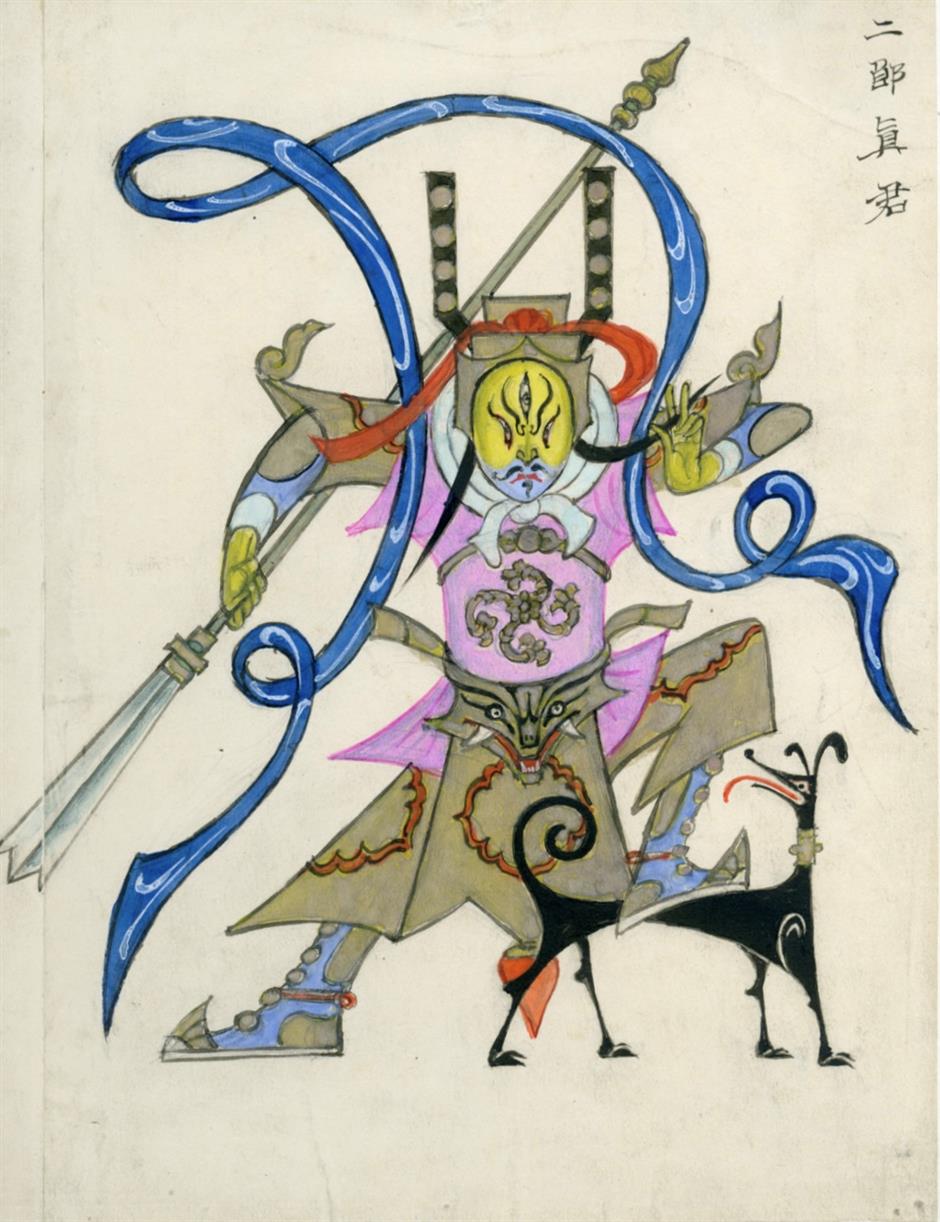
One of the sketches of the film depicts Yang Jian, God Erlang.
Between 1961 and 1964, the studio produced the country's first color animated feature, "The Monkey King: Uproar in Heaven."
This seminal work by Wai Laiming and Tang Cheng, based on the 16th-century Chinese novel "Journey to the West," is about Sun Wukong's mischievous voyage in heaven and his battle with the Jade Emperor using his wit and supernatural might.
The iconic image of the Monkey King was so well-created on screen that it influenced even Japanese animators. The animated film had about 850 shots in two episodes, which required over 154,000 sketches in 120 colors.
A total of 127 sketches were utilized to portray how the Monkey King confronts the three-headed and six-armed Nezha in three clones in a scene lasting only 5 seconds.
Audiences and critics praised the film for its story and creativity. It was widely screened in China and was distributed and presented in over 40 countries and regions.
It won Best Animation at the 2nd Hundred Flowers Awards. The film won awards at the London International Film Festival and the Karlovy Vary International Film Festival in 1978.
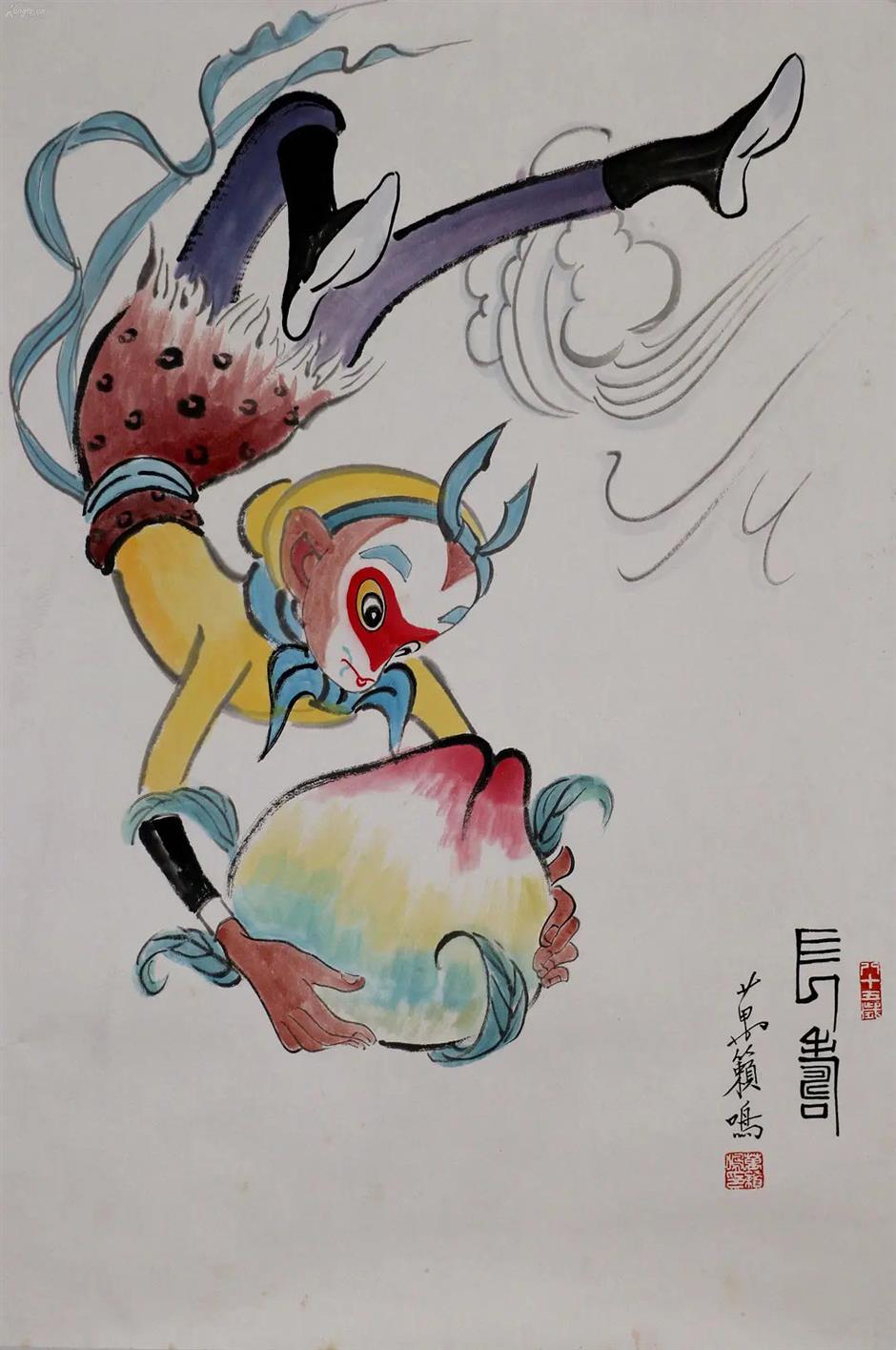
A painting of the Monkey King — Sun Wukong by Wan Laiming.

Wan Laiming's drawing of the main characters of "Journey to the West."

Wan Laiming interacts with children.
The success of the film also increased Chinese animators' confidence in exploring the Chinese style of animation.
They drew inspiration from China's outstanding traditional arts, folklore, and tales. Paper cutting, Chinese ink-wash painting, paper folding, and puppetry were among the many genres produced by the institution.
Wan Guchan's "Pigsy Eats Watermelon" became China's first paper-cutting animation in 1958. The Monkey King teases Pigsy after he consumes the entire watermelon in the 20-minute short film.
The company also produced the world's first ink-wash animation, "Baby Tadpoles Look for Their Mother," two years later. The film, which drew inspiration from Qi Baishi's paintings, signaled a breakthrough in Chinese animation's artistic expression and aesthetic ideas.
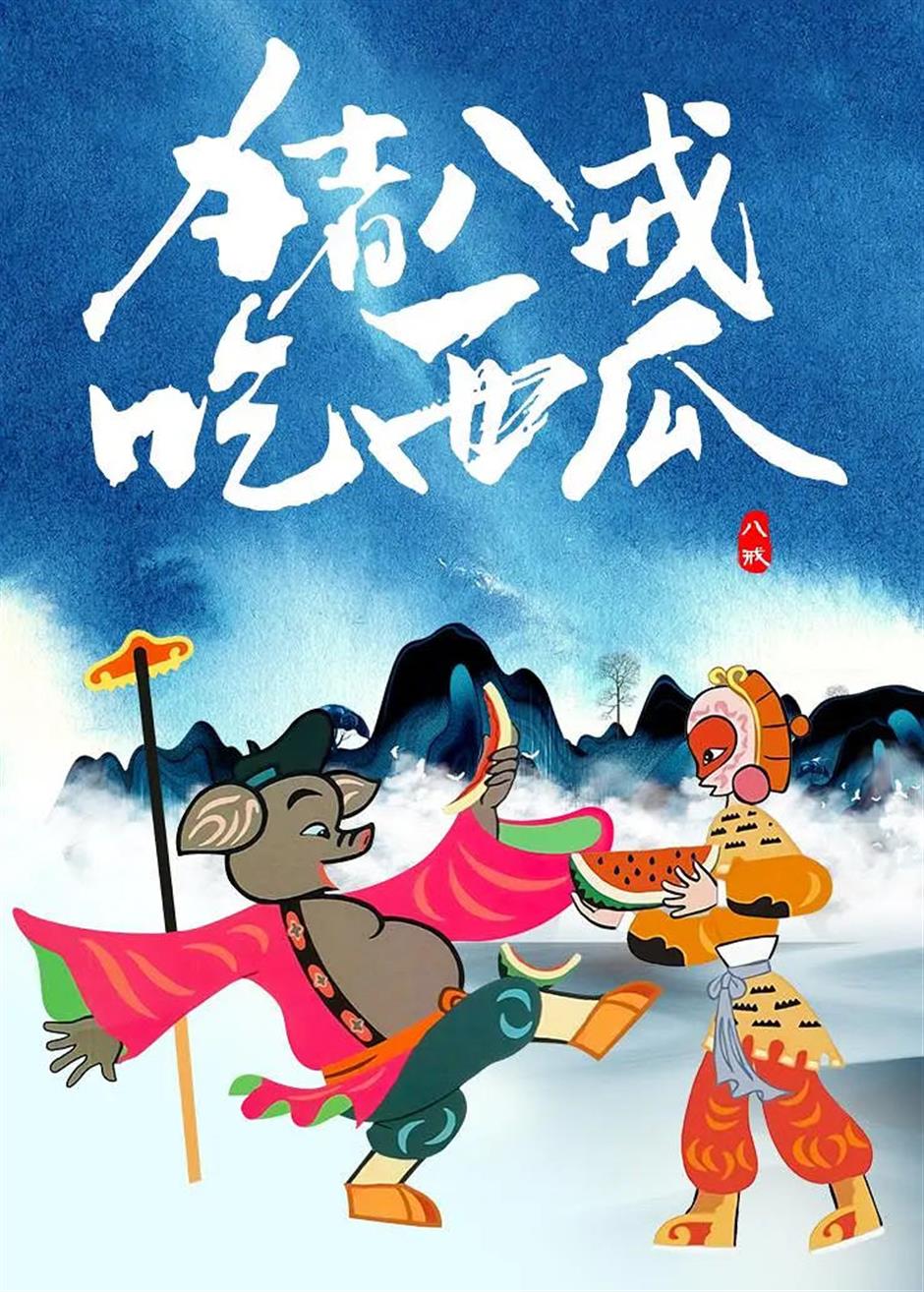
A poster of "Pigsy Eats Watermelon," China's first paper-cutting animation.

A poster of the world's first ink-wash animation "Baby Tadpoles Look for Their Mother."
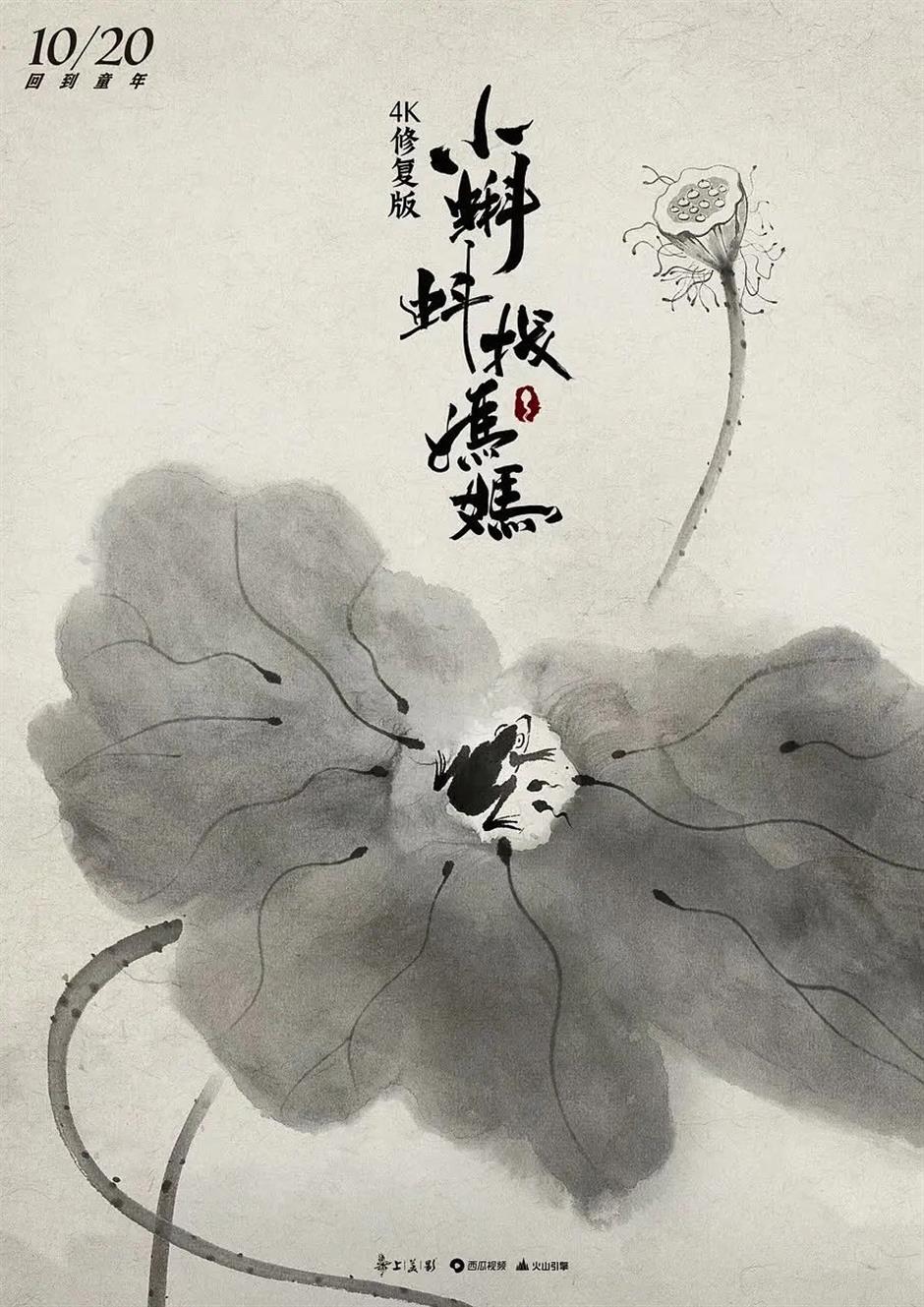
A poster of the 4K restored version of "Baby Tadpoles Look for Their Mother."
In the film, the young tadpoles, shrimp, fish, and crabs in Qi's paintings come to life, accompanied by traditional Chinese musical instruments. Its innovative film technology and creative ink-wash approach received high accolades at film festivals in Switzerland and France.
The film won an honorary prize at the 17th Cannes Film Festival in 1964.
According to the late cartoonist Fang Cheng, each shot in the film is a touching image that leads moviegoers to the palace of art. The French daily Le Monde commended the elegance of the Chinese ink-wash paintings as well as the film's poetic charm.
The second ink-wash film, "Buffalo Boy and the Flute," was likewise a success when it was released in 1963. Te Wei and Qian Jiajun's film depicts the strong emotional ties between a Chinese cowherd and his buffalo with the effective use of flute music.
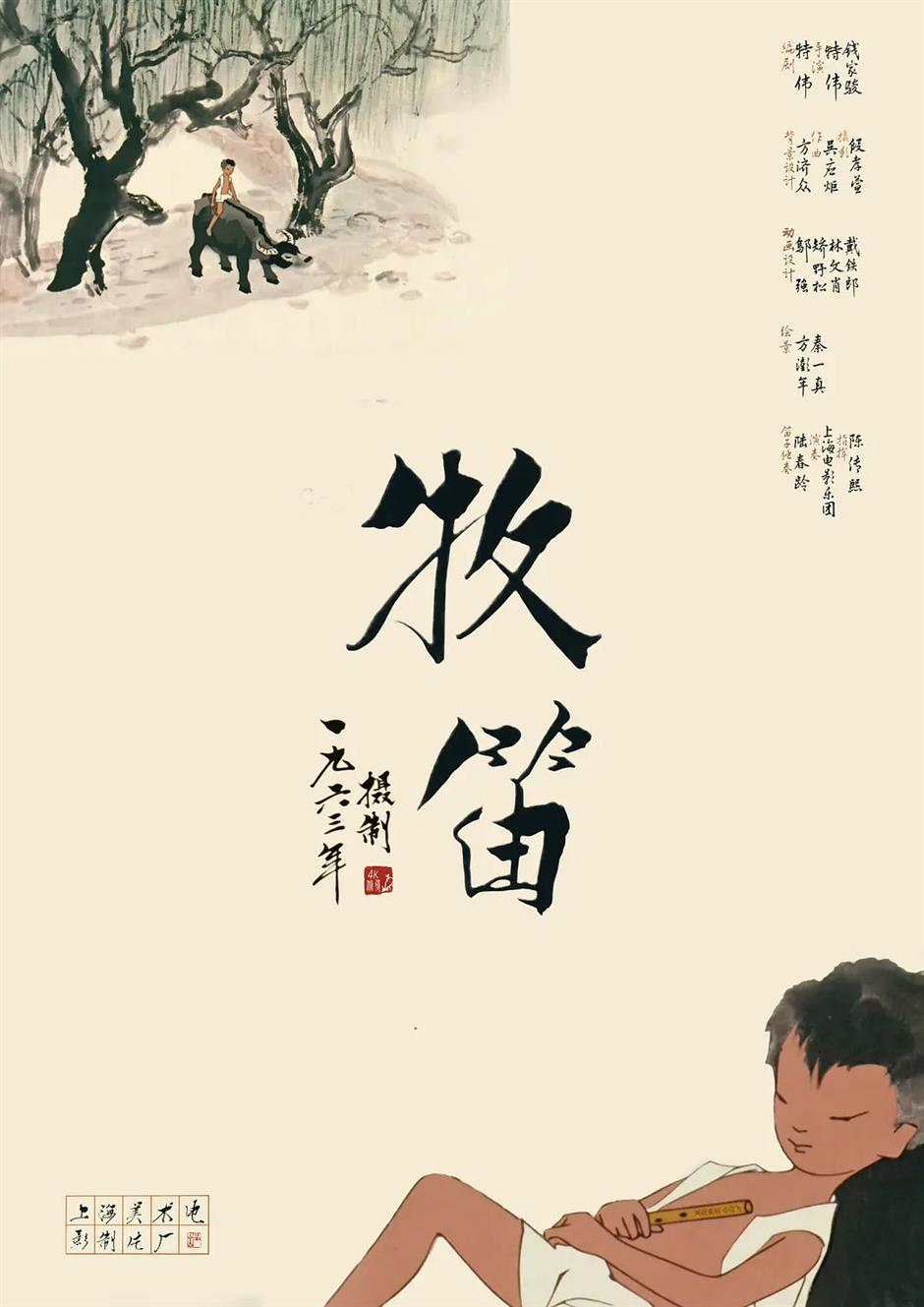
Ink-wash animation "Buffalo Boy and the Flute" was released in 1963 was a huge success.
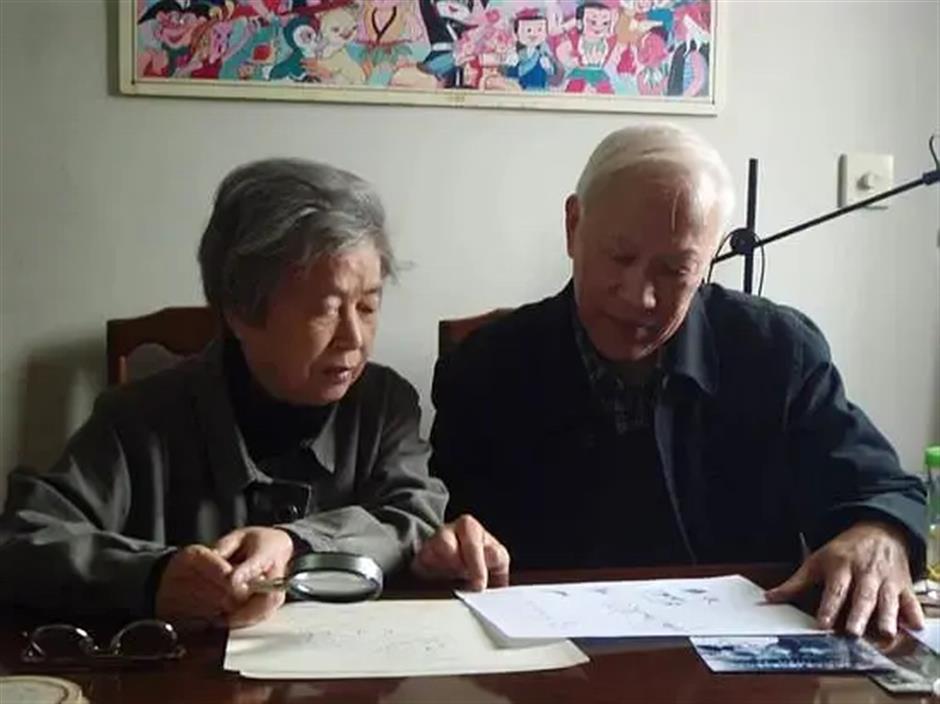
Lin Wenxiao (left) and Yan Dingxian are the animators behind many acclaimed productions.

A poster of China's first paper-folding animation, "A Clever Duckling."
Li Keran, a well-known Chinese painter and art professor, created 14 pieces of cowboy and buffalo just for the film. Animator Lin Wenxiao was also involved in the film's creation.
Lin has stated in interviews that she spent a significant amount of time monitoring the performance of flutist Lu Chunling and sketching his beautiful wrist movements to generate vivid and trustworthy images in the film.
When it was broadcast in other countries, the film earned widespread appreciation. In 1979, it won the Golden Prize at the Odense International Fairy Tale Film Festival in Denmark. Many foreign viewers were astounded by the cinematography and dubbed ink-wash animation the "fifth great Chinese invention."
In 1960, China released its first paper-folding animation, "A Clever Duckling." The plot revolves around three ducklings' encounter with a black cat. When it was screened at the 11th Giffoni Film Festival in Italy in 1981, the film's unique artistic style proved popular among foreign audiences.
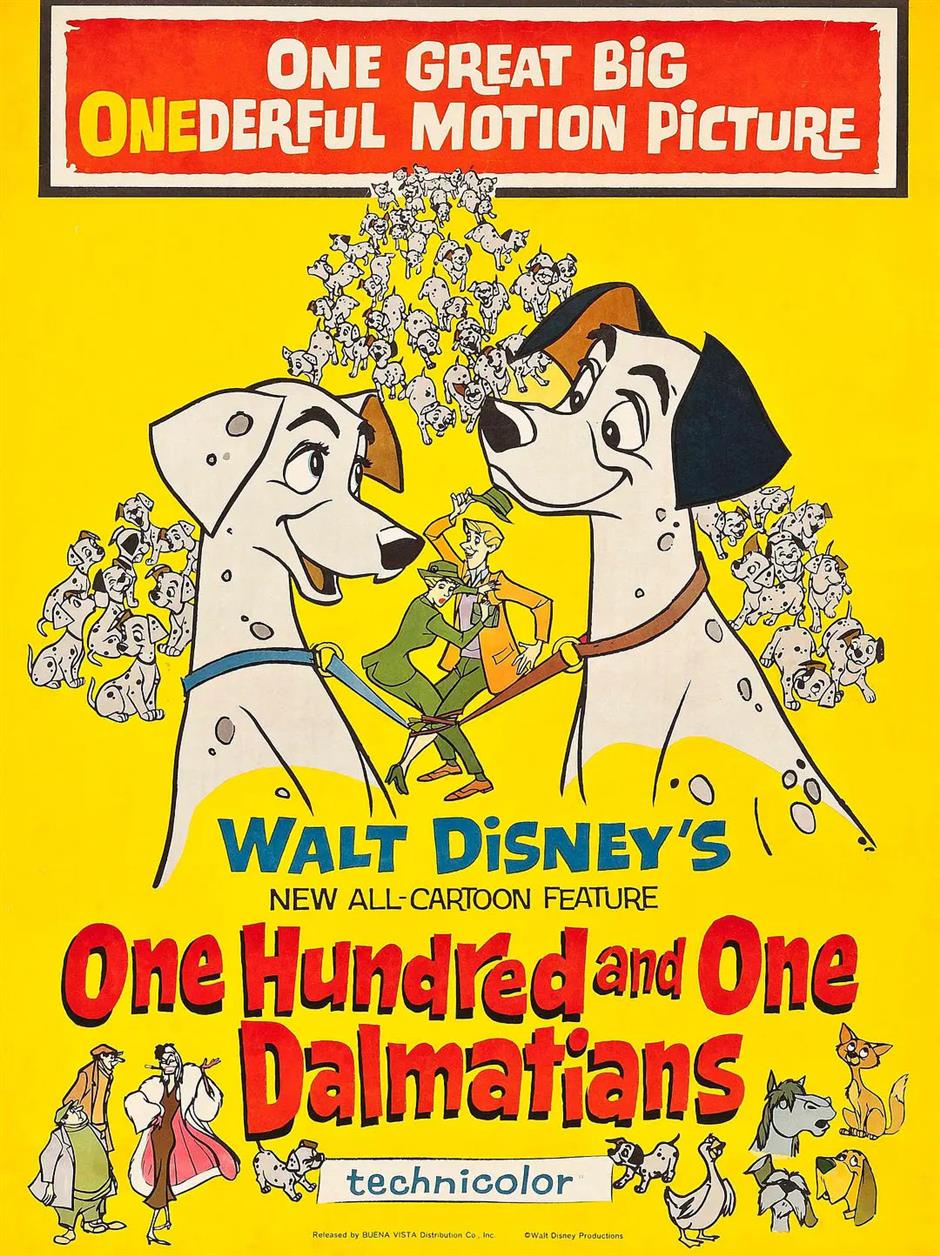
A poster of "One Hundred and One Dalmatians."
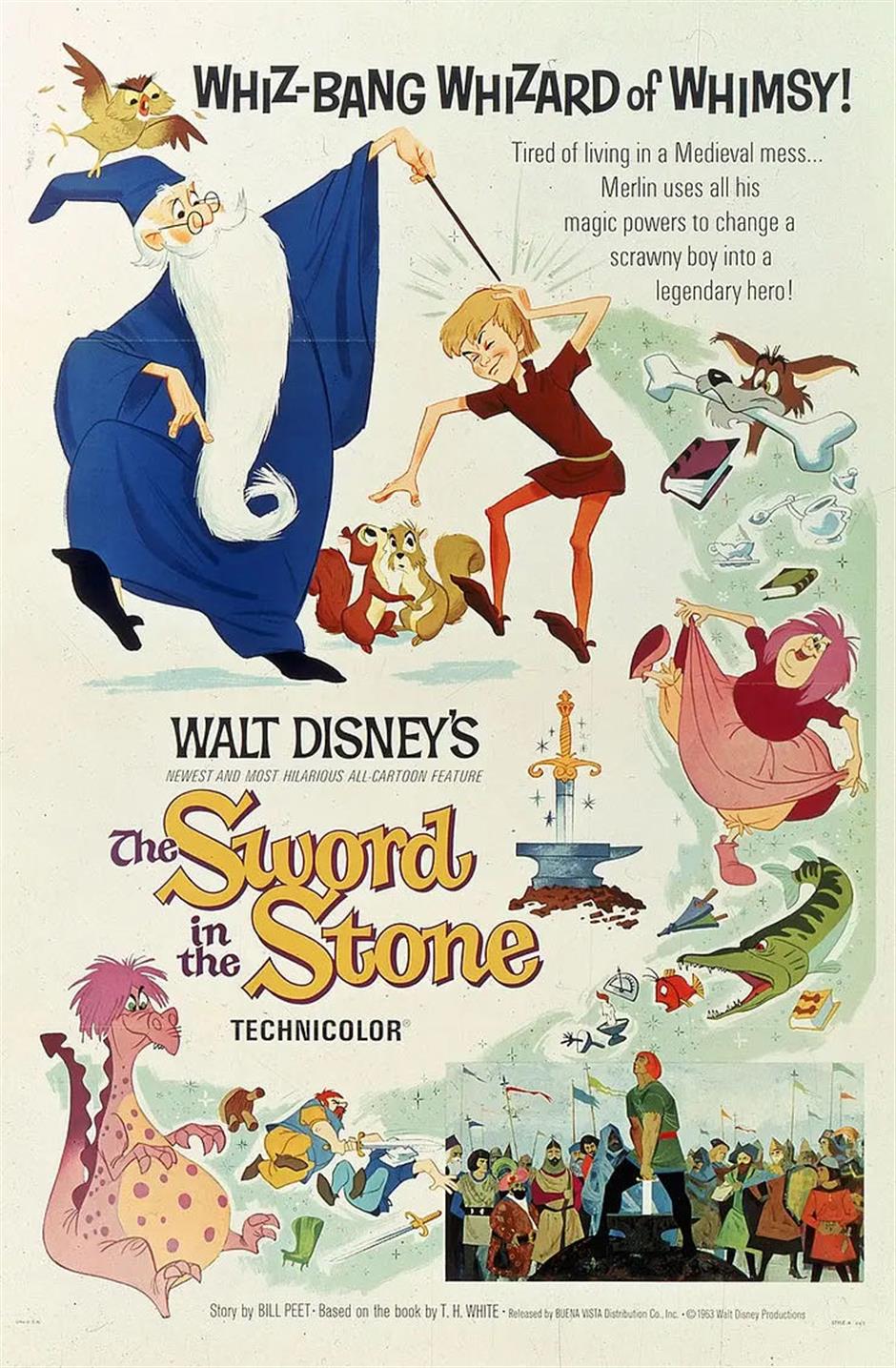
A poster of "The Sword in the Stone."
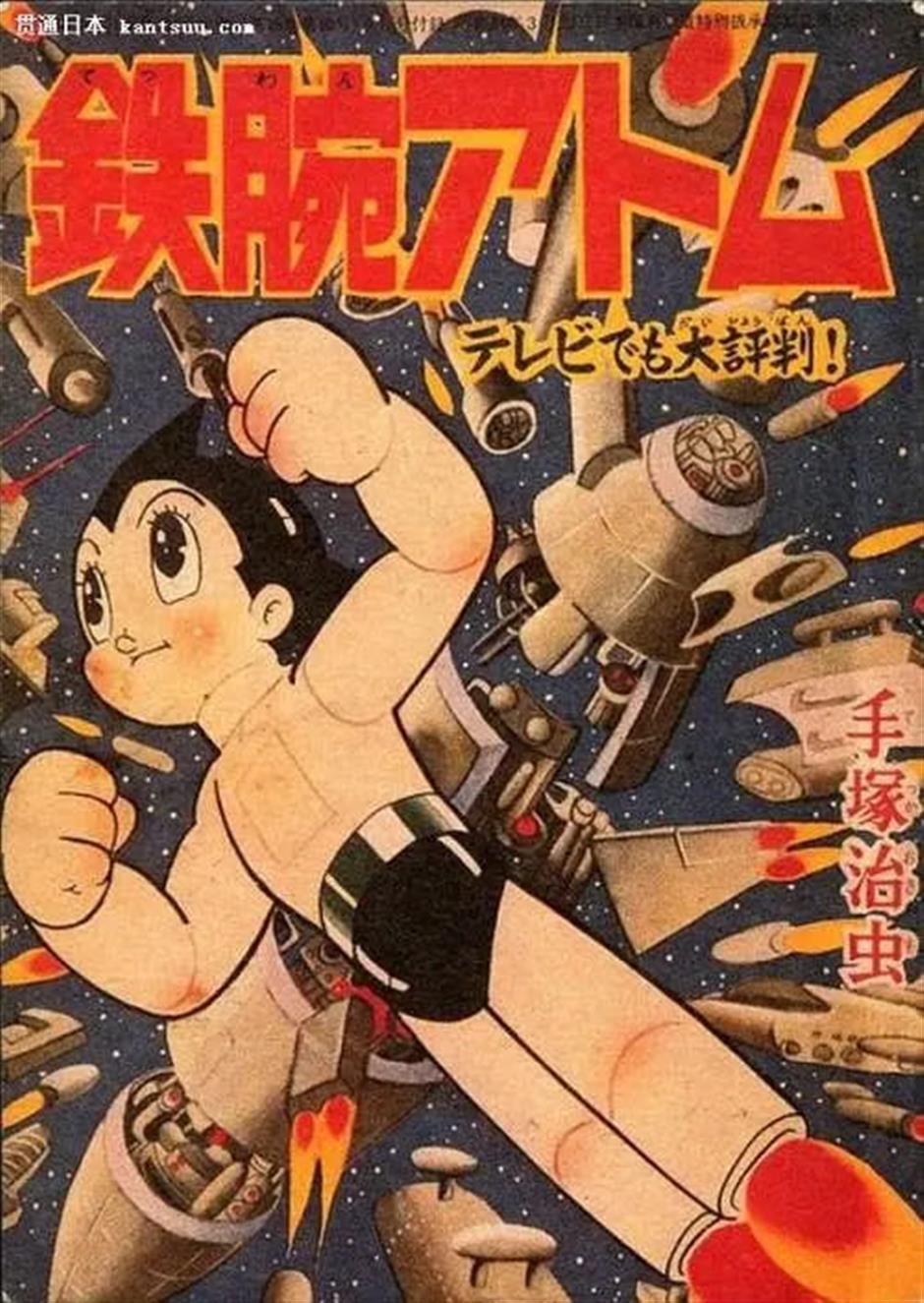
A poster of "Astro Boy" by Japanese manga artist and animator Osamu Tezuka.
During this period, Disney released a few successful films, notably "One Hundred and One Dalmatians" (1961) and "The Sword in the Stone" (1963). Disney was reshaping the American animation and entertainment industries.
Walt Disney, a pioneer and innovator of cartoon films, died in December 1966. It was a significant setback for the animated movie business. At the time, many American families had purchased color televisions, and animation studios began selling animated short films to television stations. The American television animation industry was ready to take off.
In 1958, Japan produced the first color animated feature picture, "The Legend of the White Snake." It was based on a Chinese folktale about the romance between Xu Xian and the snake spirit Bai Suzhen.
Meanwhile, Osamu Tezuka, a well-known Japanese manga artist and animator, was working on the sci-fi comic series "Astro Boy." From 1952 to 1968, a Japanese magazine published a manga about a young robot with remarkable powers that became a sensation.
In the early 1960s, an animated series was based on the manga. It debuted on Japanese television channels in 1963 as the first Japanese animated television series. It was also the Chinese mainland's first international animated series.
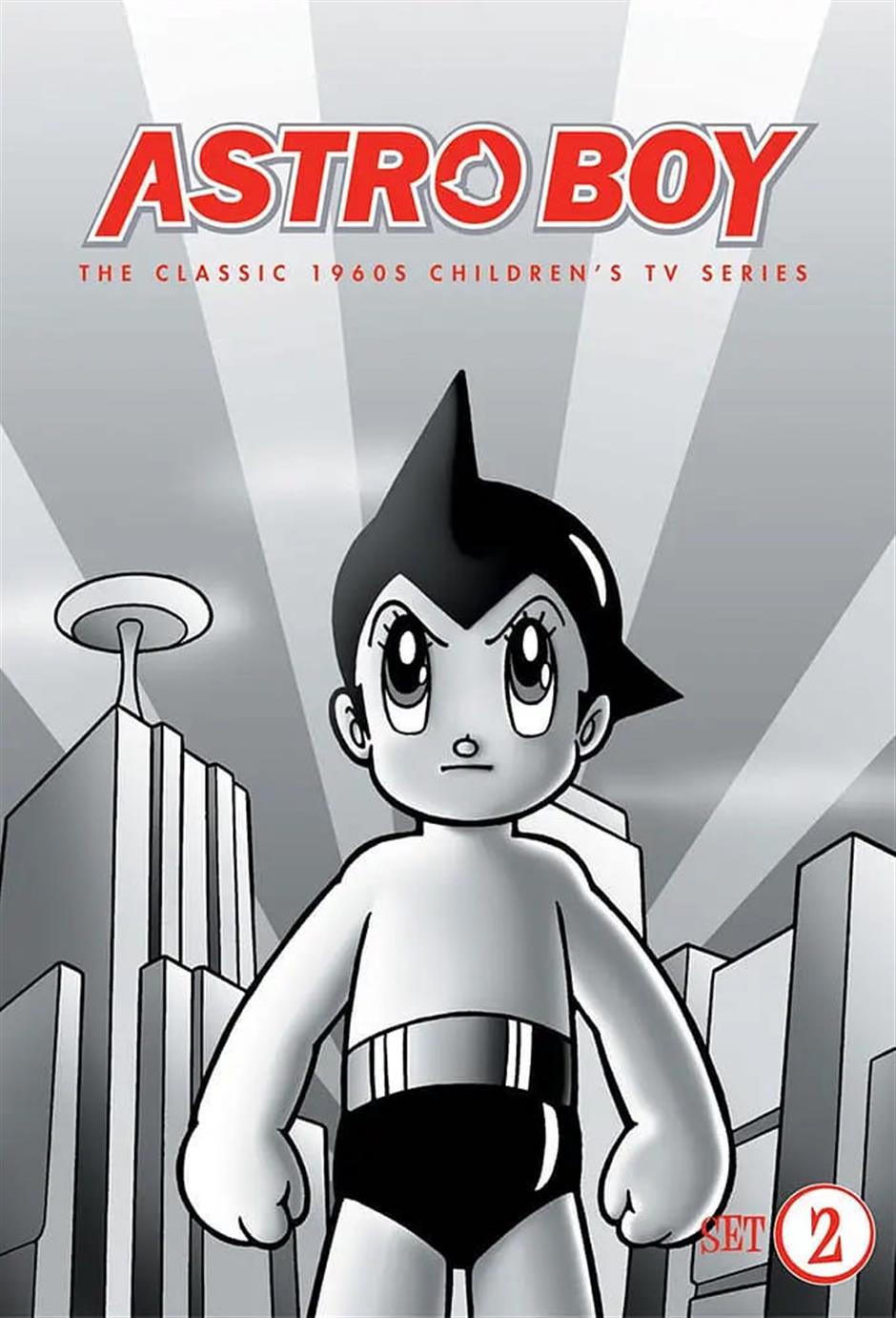
The manga was made into an animated TV series in the early 1960s. It was also the first foreign animated series to be introduced on the Chinese mainland.

Osamu Tezuka once drew a picture of the Monkey King and the Astro Boy to mark the friendship between Chinese and Japanese animators.
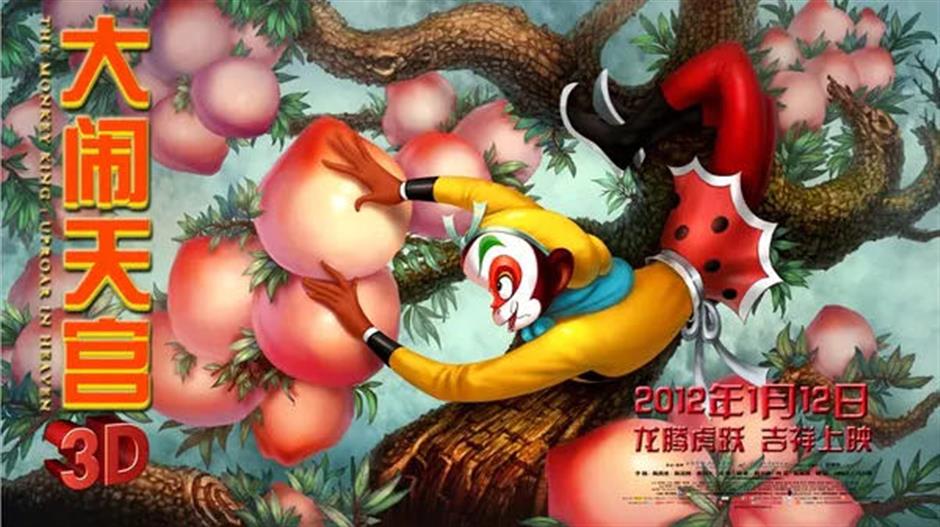
"The Monkey King 3D" by Chen Zhihong and Su Da was released in January 2012.
Professor Chen Zhihong, a prominent animation director and professor at Shanghai University's Shanghai Film Academy, expressed his gratitude for the Shanghai Animation Film Studio's artistic legacy.
In 2011, Chen and Su Da, the current director of Shanghai Animation Film Studio, co-directed "The Monkey King 3D."
The digital film restored the original 1960s film's color and sequences, remade and re-dubbed all the sounds, and featured dazzling 3D special effects. The film's length was reduced to roughly 80 minutes, with a streamlined storyline. The film received an Achievement Award at the Hawaii International Film Festival in 2012.
Professor Chen said that Te Wei, the founding director of the Shanghai Animation Film Studio, constantly pushed animators to explore and create unique artistic styles and approaches to animation production.
"During this period, Chinese animation was exploring and innovating from multiple perspectives," Chen said. "It developed its own aesthetics and animation language. Chinese animators are still hard at work on this road of creativity and innovation."

Professor Chen Zhihong of Shanghai Animation Film Studio.
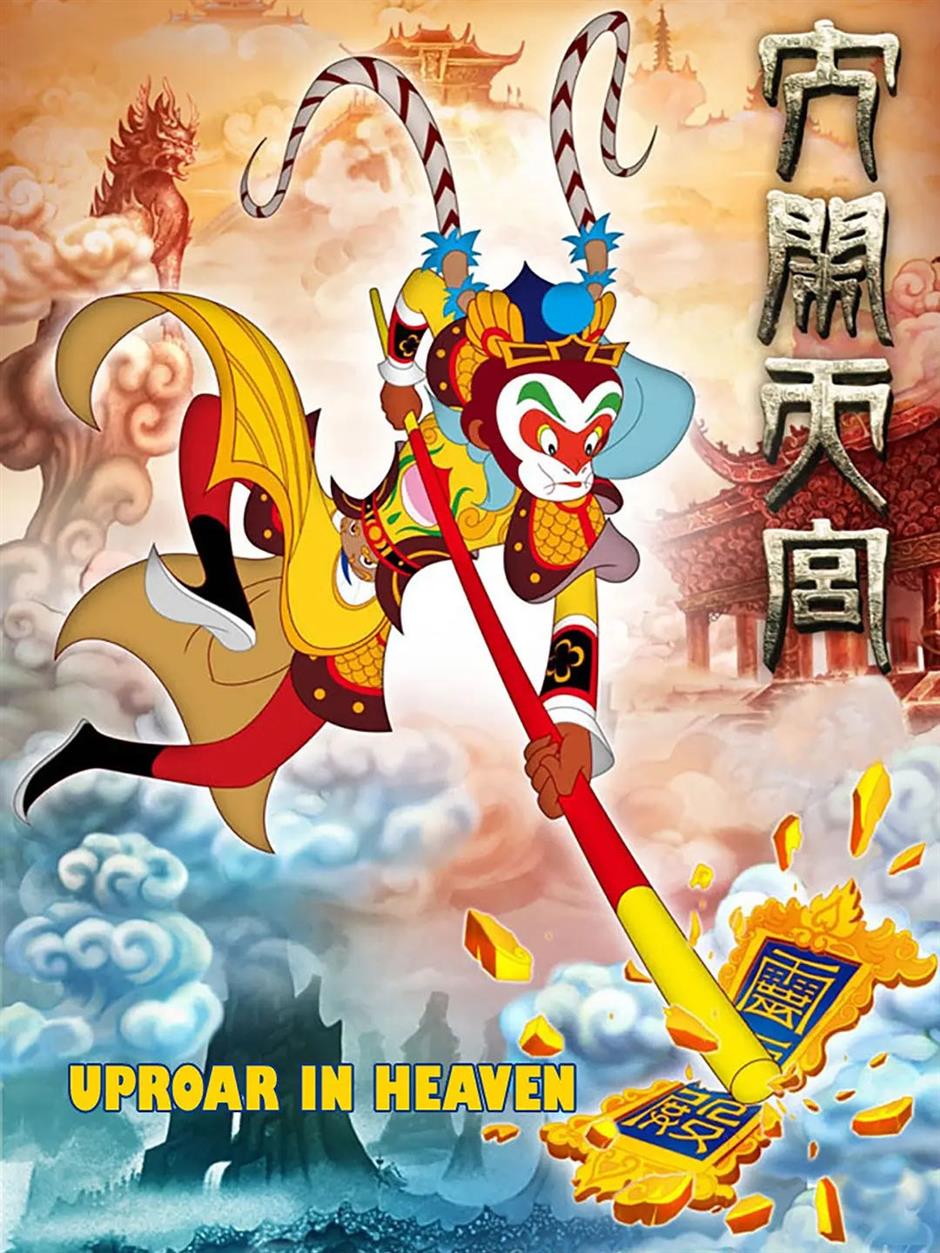
The film restored the 1960s movie's color and sequences, remade and re-dubbed the audio, and added stunning 3D special effects.
Source: Shanghai Daily
